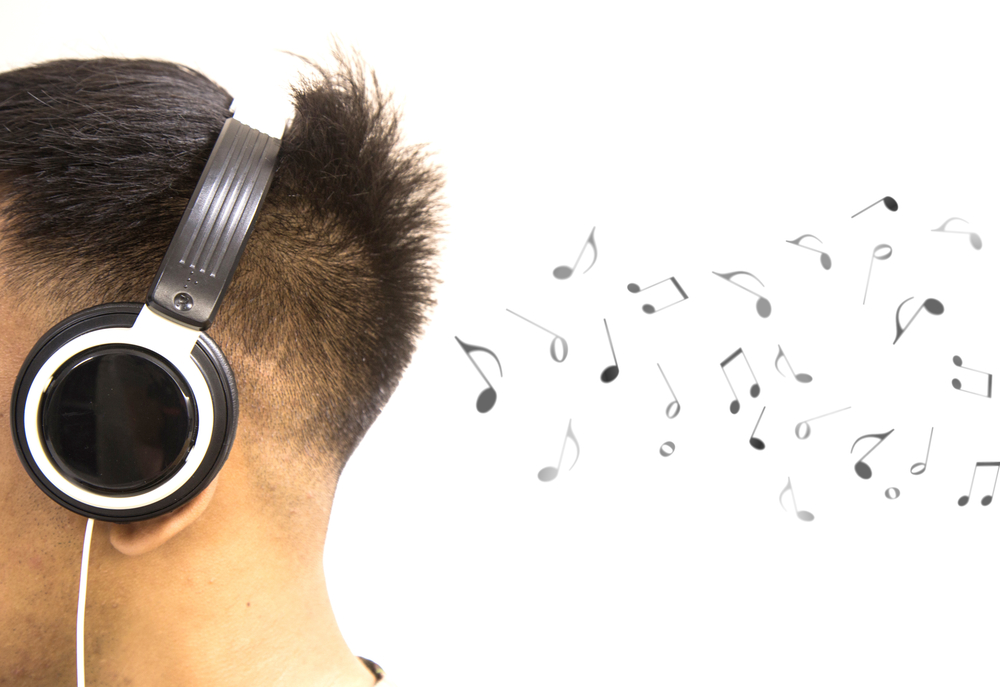Synaesthesia, a captivating neurological phenomenon, blurs the lines between the senses, enabling individuals to taste words and hear colours.
The fusion of sensory information not only enriches one’s perceptual world but also sheds light on the brain’s complex wiring. Furthermore, the captivating realm of synaesthesia opens a window into a unique sensory world where the usual boundaries between sight, sound, taste, and touch are blurred.
Synaesthetic individuals, or synaesthetes, may taste the texture of words, hear the kaleidoscope of colours, or see the timbre of musical notes. Remarkably, this phenomenon is not about metaphorical expressions, but a literal sensory experience that elucidates the intricate connections within the human brain.
The Symphony of Synaesthesia
Synaesthesia is a captivating neurological condition where stimulation in one sensory or cognitive stream leads to associated experiences in a second, unstimulated stream, creating a blend of sensory perceptions. Additionally, this phenomenon is often inherited, appearing in about 1% of the population. Furthermore, it comes in various forms, with grapheme-colour synaesthesia being one of the most investigated types.
For instance, synaesthetes may not only hear a musical note but also see a colour or feel a texture with it, enriching their perceptual world with layered experiences. While some might see a world of magenta Tuesdays, others could taste shapes or see wavy green symphonies. The uniqueness of each synaesthetic experience is deeply personal, varying significantly from one individual to another1.
Research posits that this enhanced sensory communication doesn’t interfere with normal daily functioning, thus not classified as a disorder in major diagnostic manuals like the DSM IV or the ICD. The exact prevalence remains elusive, yet estimates suggest a range between 1 in 200 to 1 in 2,000 individuals, showcasing a rare yet fascinating glimpse into the complex interplay of sensory systems and cognition.
Neurological Underpinnings of Synaesthesia
The neurological underpinnings of synaesthesia have indeed piqued the interest of neuroscientists, leading to an exploration of the enhanced interconnectivity between sensory regions in the brain observed in synaesthetes. Here’s a detailed insight into the neurobiological facets of synaesthesia based on various studies and reviews:
Imaging Studies:
Functional neuroimaging techniques like Positron Emission Tomography (PET) and Functional Magnetic Resonance Imaging (fMRI) have been instrumental in unveiling the significant differences between the brains of synaesthetes and non-synaesthetes, although some studies have not found such differences.
Imaging studies have unveiled increased structural and functional connectivity in various brain regions among individuals with synaesthesia, establishing a neurological basis for the condition.
Brain Regions:
Research has identified six overlapping brain regions involved in synaesthesia, encompassing sensory, motor, and ‘higher level’ regions in the parietal and frontal lobes. These regions are believed to relate to three core cognitive processes inherent in synaesthesia: sensory processes, attentional ‘binding’ processes, and cognitive control processes.
Synaesthetic Experiences:
Synaesthetic experiences activate sensory brain areas corresponding to the type of experience. For instance, synaesthetic colour experiences can activate colour regions in the occipito-temporal cortex, not necessarily restricted to V4. The activation extends beyond the specific type of synaesthesia being studied, indicating a broad neurological engagement.
Individual Differences:
The nuances in experimental setups, the diversity of synaesthetes tested, and methodologies to delineate regions of interest could explain inconsistent results obtained in Blood Oxygen Level Dependent functional MRI (BOLD-MRI) studies.
Understanding synaesthesia necessitates a separation of the overarching trait from the specific types of synaesthetic associations, aiding in a more nuanced comprehension of its neurobiological basis.
Neurocognitive Mechanisms:
Synaesthesia might be defined as a subjective phenomenon of additional experiences that sometimes mix sensory modalities. Additionally, the neurocognitive mechanisms underlying synaesthesia have been explored through various lenses, including genetic, cognitive, and perceptual studies. Furthermore, neural models and functional imaging studies have played a significant role in shedding light on this intriguing phenomenon. Moreover, examining individual differences has also contributed to our understanding of synaesthesia.
The Kaleidoscope of Applications
The exploration of synaesthesia indeed presents a kaleidoscope of applications across diverse fields, shedding light on the intricate interplay of sensory modalities and cognition:
Enhanced Learning and Memory:
Synaesthesia can aid in learning and memory, as it provides additional sensory experiences that may facilitate the retention and recall of information. For instance, associating a colour with a number or a letter may help in remembering sequences or spellings.
Creativity and Art:
The cross-modal experiences in synaesthesia are known to foster creativity, especially in the realm of visual arts. Many well-known artists are synaesthetes, and their work often reflects their unique sensory experiences.
Synaesthesia has found applications in various art forms including painting, film, animation, and even urban architecture. The blending of senses allows for a richer, more nuanced understanding and portrayal of artistic concepts.
Education:
Educational initiatives like the Synaesthesia Gallery AR aim to raise awareness about synaesthesia and foster an understanding of cross-modal perception through game-like experiences.
Neuroscience and Psychology:
The study of synaesthesia provides unique insights into how the brain segregates and integrates different sensations and thoughts. Consequently, it serves as a window into understanding the neurological and behavioral aspects of sensory processing and perception.
Moreover, synaesthesia research is deemed beneficial for delving into consciousness. It presents a unique scenario where additional phenomenal experiences occur, thereby aiding in the exploration of the “hard” problem of consciousness, which revolves around understanding subjective experiences.
Understanding Human Cognition:
Synaesthesia demonstrates how sensory modalities can be intertwined, thereby challenging traditional boundaries of perception and cognition. Moreover, it enriches the understanding of human cognition by presenting a scenario where sensory and cognitive pathways interact in an extraordinary manner.
Furthermore, by challenging traditional boundaries of perception and cognition, synaesthesia invites us to explore the extraordinary ways in which our sensory and cognitive pathways can intertwine. Consequently, as we continue to unravel the mysteries of this captivating realm, we gain a deeper understanding of the human experience and the profound connections within our own minds.
References
- Eagleman, D. M. (2010, January 8). Synaesthesia. BMJ; BMJ. https://doi.org/10.1136/bmj.b4616
- Carmichael, D., & Simner, J. (2013, January 1). The immune hypothesis of synesthesia. Frontiers in Human Neuroscience; Frontiers Media. https://doi.org/10.3389/fnhum.2013.00563
- Hubbard, E. M. (2007, June 1). Neurophysiology of synesthesia. Current Psychiatry Reports; Springer Science+Business Media. https://doi.org/10.1007/s11920-007-0018-6
- Coulson, S. (2018, January 1). Metaphor and synesthesia. Psychology of Learning and Motivation. https://doi.org/10.1016/bs.plm.2018.09.003
- Terhune, D. B., & Kadosh, R. C. (2011, November 16). Synaesthesias. Springer eBooks. https://doi.org/10.1007/978-1-4614-0959-5_7
- Shaw, G. (2018, April 19). Unlocking the Genetic Basis of Synesthesia. Neurology Today; Lippincott Williams & Wilkins. https://doi.org/10.1097/01.nt.0000532695.60522.5c
- Rouw, R., Scholte, H. S., & Colizoli, O. (2011, September 1). Brain areas involved in synaesthesia: A review. Journal of Neuropsychology; Wiley-Blackwell. https://doi.org/10.1111/j.1748-6653.2011.02006.x
- Rouw, R., Scholte, H. S., & Colizoli, O. (2011, September 1). Brain areas involved in synaesthesia: A review. Journal of Neuropsychology; Wiley-Blackwell. https://doi.org/10.1111/j.1748-6653.2011.02006.x
- Hubbard, E. M., & Ramachandran, V. S. (2005, November 1). Neurocognitive Mechanisms of Synesthesia. Neuron; Cell Press. https://doi.org/10.1016/j.neuron.2005.10.012
- Professional, C. C. M. (n.d.). Synesthesia. Cleveland Clinic. https://my.clevelandclinic.org/health/symptoms/24995-synesthesia
- Rudenko, S., & Haahr, M. (2023). Synaesthesia Gallery AR: Journey Through the Senses – Using Augmented Reality for Education. SpringerLink. https://doi.org/10.1007/978-3-031-44751-8_15
- Research, S. (2022, February 28). Homepage : Synaesthesia research : University of Sussex. University of Sussex. https://www.sussex.ac.uk/synaesthesia/#:~:text=Studying%20synaesthesia%20may%20help%20us,potential%20application%20of%20synaesthesia%20research
- Van Leeuwen, T. M., Singer, W., & Nikolić, D. (2015, December 2). The Merit of Synesthesia for Consciousness Research. Frontiers in Psychology; Frontiers Media. https://doi.org/10.3389/fpsyg.2015.01850














